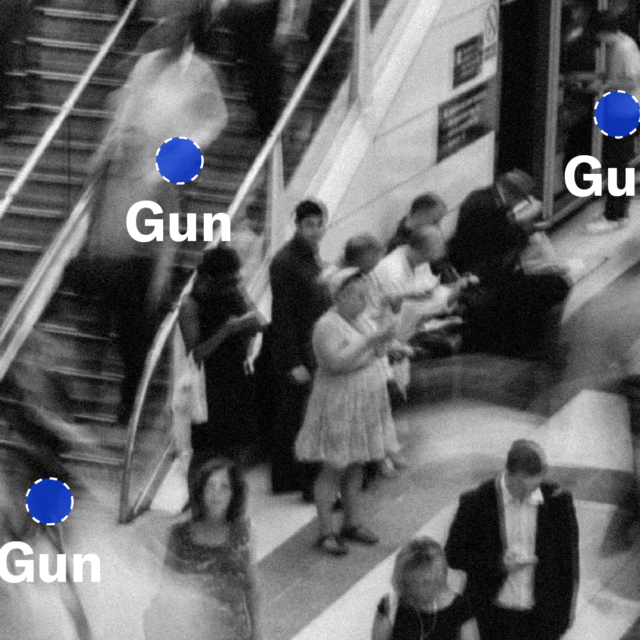Extreme Risk Laws Save Lives – Extreme Risk Laws By State
Appendix B
4.17.2020
Last Updated: 4.5.2023
| State | Policy Name | Effective Date1The effective date is the date the law first took effect in the state. The law may have been subsequently amended | Who May Ask for an Extreme Risk Order: Law Enforcement | Who May Ask for an Extreme Risk Order: Family member2Or household member. | Maximum Duration of the Ex-Parte Order (Emergency Order, if applicable)3In California, a judicial officer may issue a temporary emergency gun violence restraining order pursuant to specific request by a law enforcement officer. In Indiana, a law enforcement officer may seize a firearm without a warrant in certain circumstances. In Maryland, a court commissioner may issue an interim extreme risk protective order when the court is closed. In Massachusetts, a justice of the court may issue an emergency extreme risk protection order when the court is closed. In Michigan, a law enforcement officer may request an immediate emergency extreme risk protection order if the officer is responding to a complaint involving the respondent in certain circumstances. | Duration of the Final Order | Renewal Lasts for |
|---|---|---|---|---|---|---|---|
| California Cal. Penal Code § 18100, et. seq. | Gun Violence Restraining Order | January 1, 2016 | ✔ | ✔4Employers, certain coworkers, certain teachers, roommates, dating partners, and a person with a child in common can also file a petition. However, only law enforcement may petition for a temporary emergency order. | 21 days (21 days) | 1-5 years | 1-5 years |
| Colorado CRS § 13-14.5-101, et seq. | Extreme Risk Protection Order | April 12, 2019 | ✔ | ✔5Certain medical professionals and educators may also file a petition. | 14 days | 364 days | Up to 1 year |
| Connecticut Conn. Gen. Stat. § 29-38c, CT HB 6877 (2023), Sec. 2 | Risk Protection Order | October 1, 1999 | ✔6State’s attorney or assistant state’s attorney; any police officer. For minors, any assistant state’s attorney or any two police officers. | ✔7Certain health professionals can also file a petition. | 14 days814 days after issuance of the order and, if applicable, the search warrant. | Until terminated by the court9Lasts until terminated by the court after a petition and a hearing For minors, until further order of the court. | N/A |
| Delaware 10 Del. C. § 7701, et seq. | Lethal Violence Protective Order | December 27, 2018 | ✔ | ✔10While law enforcement and family or household members may petition for a final order, only law enforcement may petition for an ex-parte order. | 15 days | Up to 1 year | Up to 1 year |
| District of Columbia DC Code §7-2510.01, et seq. | Extreme Risk Protection Order | January 30, 201911Effective date of initial emergency law. | ✔ | ✔12Certain mental health professionals can also file a petition. | 14 days | 1 year | 1 year |
| Florida Fla. Stat. § 790.401 | Risk Protection Order | March 9, 2018 | ✔ | 14 days | Up to 1 year | Up to 1 year | |
| Hawaii H.R.S. § 134-61, et. seq. | Gun Violence Protective Order | January 1, 2020 | ✔ | ✔13Certain medical professionals, educators, and colleagues may also file a petition. | 14 days | 1 year | 1 year |
| Illinois 430 ILCS §67/1, et seq. | Firearms Restraining Order | January 1, 2019 | ✔ | ✔ | 14 days | 6 months – 1 year | Up to 1 year |
| Indiana14Law is structured as a firearm removal by law enforcement. Ind Code § 35-47-14-1, et seq. | Seizure and Retention of Firearms | July 1, 2005 | ✔ | 14 days (14 days)15If law enforcement seizes a firearm without a warrant, the officer must, within 48 hours, file an affidavit with the basis for the officer’s belief that the individual is dangerous, which the court must review as soon as possible. The court must hold a hearing within 14 days of the filing. If law enforcement seizes a firearm pursuant to a warrant, the court must hold a hearing within 14 days of the filing of the search warrant return. | Until terminated by the court16Lasts until terminated by the court after a petition and a hearing; petition may be made no earlier than 180 days after the final order | N/A | |
| Maryland Md Public Safety Code § 5-601, et seq. | Extreme Risk Protective Order | October 1, 2018 | ✔ | ✔17Certain health professionals can also file a petition. | 7 days (Earlier of exparte hearing or end of the second court day after issuance) | Up to 1 year | 6 months |
| Massachusetts Mass. Gen. Laws ch. 140, §§ 121, 129B(C), 131(C), 131R-Z | Extreme Risk Protection Order | August 17, 2018 | ✔ | ✔ | 10 days (Earlier of exparte hearing or end of the next court day after issuance) | Up to 1 year | Up to 1 year |
| Michigan Senate Bill 83 (2023) | Extreme Risk Protection Order | January 1, 2024 | ✔ | ✔18Certain health care providers can also file a petition. However, only law enforcement may petition for an immediate emergency extreme risk protection order. | One year unless a hearing is requested, which then must be held within 14 days (same for emergency orders)19A requested hearing must be held within 5 days for certain respondents who are required to carry a firearm as part of their employment. | 1 year | 1 year |
| Minnesota Minn. Stat. § 624.7171, et. seq. | Extreme Risk Protection Order | January 1, 2024 | ✔ | ✔ | 14 days | 6 months – 1 year | 6 months – 1 year |
| Nevada Nev. Rev. Stat. Ann. § 33.500, et. seq. | Order for Protection against High-Risk Behavior | January 1, 2020 | ✔ | ✔ | 7 days | Up to 1 year | Up to 1 year |
| New Jersey N.J. Stat. § 2C:58- 20, et seq. | Extreme Risk Protective Order | September 1, 2019 | ✔ | ✔ | 10 days | Until terminated by the court20Lasts until terminated by the court after a petition and a hearing. | N/A |
| New Mexico N.M. Stat. Ann. § 40-17-1, et seq. | Extreme Risk Firearm Protection Order | May 20, 2020 | ✔21While New Mexico’s Extreme Risk law does not allow family members to petition for an Extreme Risk Firearm Protection Order directly with the court, it allows certain family members, people with close personal relationships, employers, or school administrators (“reporting parties”) to request that law enforcement file a petition for an Extreme Risk Firearm Protection Order. Law enforcement must file a petition upon receiving credible information that gives law enforcement probable cause to believe that a person poses a significant danger of causing imminent personal injury to self or others by having access to a firearm. | 10 days | Up to 1 year | Up to 1 year | |
| New York NY CLS CPLR § 6340, et seq. | Extreme Risk Protection Order | August 24, 2019 | ✔ | ✔22School administrators and certain health professionals can also file a petition. | 6 days23Business days. | Up to 1 year | Up to 1 year |
| Oregon ORS § 166.525, et seq. | Extreme Risk Protection Order | January 1, 2018 | ✔ | ✔ | Up to a year unless a hearing is requested, which then must be held within 21 days.24After an ex-parte order is issued, the respondent has 30 days to request a court hearing. If a hearing is requested, it must be held within 21 days. If a hearing is not requested within 30 days, the order will be confirmed and become the final order. | 1 year | Up to 1 year |
| Rhode Island RI Gen Laws § 8-8.3-1, et seq. | Extreme Risk Protection Order | June 1, 2018 | ✔ | 14 days | 1 year | 1 year | |
| Vermont 13 VSA § 4051, et seq. | Extreme Risk Protection Order | April 11, 2018 | ✔25State’s Attorney or the Office of the Attorney General. | ✔26While family and household members may file a petition for an ex-parte order, law enforcement must be substituted as the plaintiff prior to the final hearing. | 14 days | Up to 6 months | Up to 6 months |
| Virginia Va. Code 19.2-152.13, et seq. | Substantial Risk Order | July 1, 2020 | ✔27Attorney for the Commonwealth or a Law Enforcement Officer | 14 days | Up to 180 days | Up to 180 days | |
| Washington RCW 7.105 | Extreme Risk Protection Order | December 8, 2016 | ✔ | ✔ | 14 days | 1 year | 1 year |
Learn More:
Everytown Research & Policy is a program of Everytown for Gun Safety Support Fund, an independent, non-partisan organization dedicated to understanding and reducing gun violence. Everytown Research & Policy works to do so by conducting methodologically rigorous research, supporting evidence-based policies, and communicating this knowledge to the American public.



